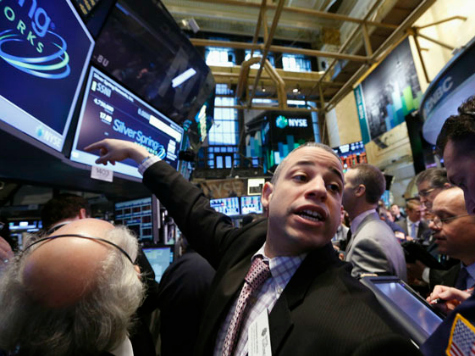Stocks may be near record levels but the bull market is not done. Digital technologies permit businesses to use investors’ cash far more efficiently these days, and could easily push up stock prices another 25 percent.
Henry Ford had a great idea–an inexpensive assembly line vehicle–but he needed vast amounts of capital and decades to erect factories, cultivate suppliers, and establish a national dealership network.
In only six years, Google used off the shelf servers and the free internet to convert its novel search engine and an investment of $25 million into a global company worth $23 billion at its initial public offering.
In the digital age, innovators don’t need a lot of money to create a valuable company. Old line industrial firms can use factories and manage supply chains more efficiently. Modern multinationals like GE exploit new products and markets, and generate vast profits, with much less cash than in decades past.
That’s why big U.S. companies are flush with billions in excess profits–they don’t lack for opportunities but need much less cash to exploit those. Along with individual investors, they bid up prices for young companies like Facebook and Twitter, and buy back large blocks of their own stock.
The abundance of financial capital pushes up sustainable stock prices and price-earnings ratios.
The Standard and Poor’s 500 Index, which encompasses about four-fifths of U.S. publicly traded equities, recently closed as high as 1988 with P/E ratio of about 19.60. Over the past 25 years, that ratio has averaged 18.90, and when the index first crossed the 1000 threshold in 1998, the P/E ratio was about 25.
Considering how efficiently the digital economy can create wealth from investors’ cash, a P/E ratio as high as 25 and the S&P index trading at 2500 are quite possible
As the Federal Reserve raises short term rates in 2015, medium and long rates will not go up a lot–further supporting stock prices at higher levels.
China is printing hundreds of billions of yuan to buy dollars and U.S. Treasuries to push down the yuan-dollar exchange rate. That will significantly frustrate Fed efforts to raise medium and long term interest rates by pushing up the federal funds rate or deploying other policy tools that raise banks’ short-term borrowing costs.
Similarly, troubles in the Ukraine and elsewhere, and continuing jitters about Eurozone sovereign debt and Asian growth, will push safe haven investors into U.S. Treasuries and other high-grade securities.
Beijing may be successful in cultivating an overseas market for yuan for the purpose of paying for Chinese exports, but it will not soon raise accounting standards and legal safeguards enough to motivate safe haven investors to seek Chinese securities in place of U.S. investments.
To counter forces holding down medium and long term interest rates, the Fed could start selling off its holdings of mortgage backed securities, but considering the fragile states of the housing recovery and private mortgage-financing that is hardly likely.
Jitters cultivated by bearish pundits and money managers competing for headlines and investors’ attention, or recession scares motivated by conditions in the Ukraine or other trouble spots, could motivate a stock selloff and an adjustment in equity prices of as much as 20 percent but those would rebound.
Longer term, however, current valuations are sound and are likely on the low side.
The world is awash in cash, quite apart from Fed policies, because digital technology has made the vast amounts of cash, sitting on the books of large corporations and in the money market instruments and CDs of individual investors, less necessary to businesses and stocks worth a lot more.
Simply, sustainable yields on bonds and fixed income investments are lower, and sustainable P/E ratios are higher.
Before this bull market is done, the S&P could easily pierce 2500.
Peter Morici is an economist and professor at the Smith School of Business, University of Maryland, and a national columnist. He is the five time winner of the MarketWatch best forecaster award and tweets @PMorici1

COMMENTS
Please let us know if you're having issues with commenting.